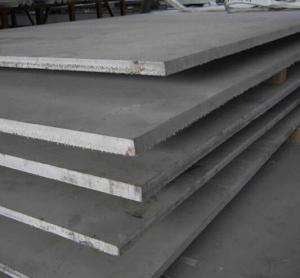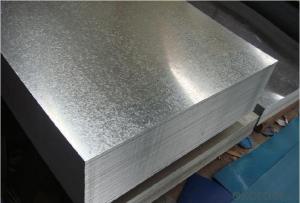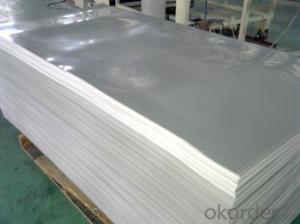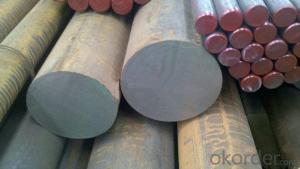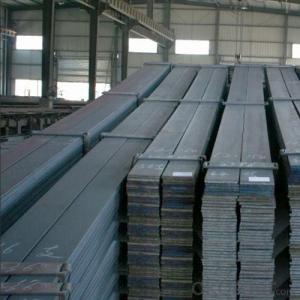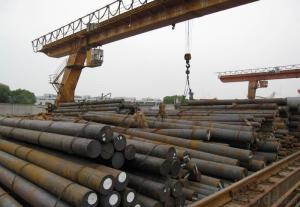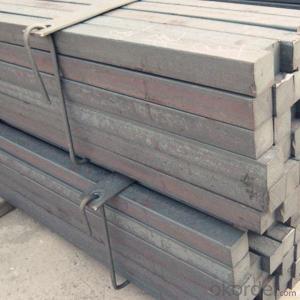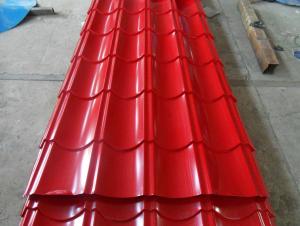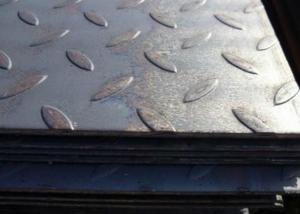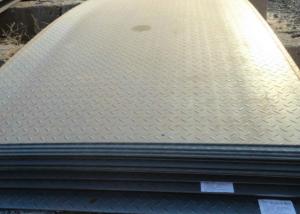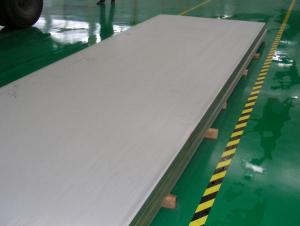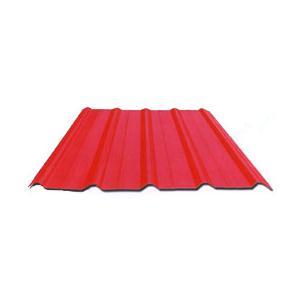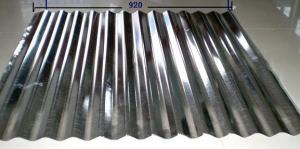Steel Sheet Carbon Galvanized SS400 A36 Q195 Q235 S235JR
- Loading Port:
- Tianjin
- Payment Terms:
- TT OR LC
- Min Order Qty:
- 50 m.t.
- Supply Capability:
- 50000 m.t./month
OKorder Service Pledge
OKorder Financial Service
You Might Also Like
Specification
1.Description of steel plate:
Our products into high-strength low-alloy steel plate, carbon structural steel plate, alloy structural steel plate, boiler and pressure vessel steel plate, bridge steel plate, structural steel plate, shipbuilding steel plate and marine oil platform steel plate, pipe steel plate, high strength and high toughness steel plate, mold plate, corrosion-resistant plate, Wear-resistand steel plate, composite plate with 12 major series.
2.Size range: Steel Plate width 300-5000mm, thickness 5-600mm, length 1000-18000mm.
Usage: (1).used for metallurgical, mechanical, electrical construction field
(2).used for ships, military (armored) Construction
(3).used for outside engineering, machine tool base, automobile rear of products
3.Standard: According to user requirements, can be delivered the following criteria: National standards, the metallurgical industry, the American ASTM, ASME standards, Japanese JIS, German DIN, British BS, European EN, the international ISO standards and the standards specific board.
4.Inspection Standard: In accordance with China (JB4730, GB/T2970), United States (A435, A577, A588), Japan (JISG0801, JISG0901), Germany (SEL072), British (BS5996), France (NFS04-305) and other domestic and international testing standard production test.
5.Data of steel sheet:
Tensile Properties
| Grade | Tensile Strength(min) | Tensile Strength(min) | Yield Strength(min) | Yield Strength(min) | Elongation(%) |
| Ksi | Mpa | Ksi | Mpa | ||
| Gr1 | 35 | 240 | 20 | 138 | 24 |
| Gr2 | 50 | 345 | 40 | 275 | 20 |
| Gr3 | 65 | 450 | 55 | 380 | 18 |
| Gr5 | 130 | 895 | 120 | 828 | 10 |
| Gr7 | 50 | 345 | 40 | 275 | 20 |
| Gr9 | 90 | 620 | 70 | 438 | 15 |
| Gr12 | 70 | 438 | 50 | 345 | 18 |
6.Image of steel sheet:
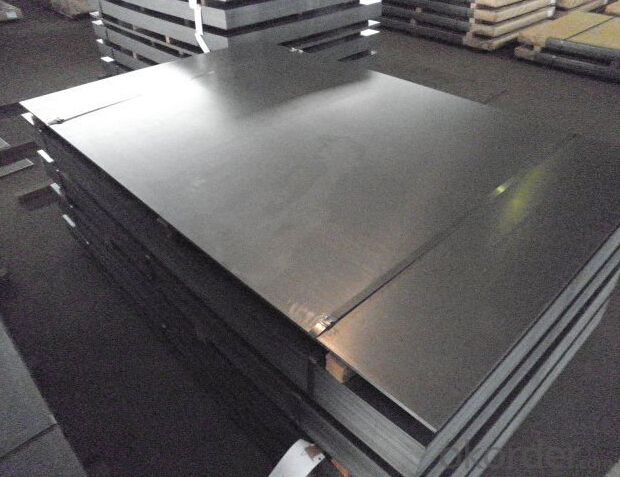
7.FAQ
We have organized several common questions for our clients,may help you sincerely:
①How about your Warranty?
Warranty: 1-Year for the whole light. Warranty is based on correct storage, installation, using and maintenanc
②How to guarantee the quality of the products?
We have established the international advanced quality management system,every link from raw material to final product we have strict quality test;We resolutely put an end to unqualified products flowing into the market. At the same time, we will provide necessary follow-up service assurance.
③How long can we receive the product after purchase?
In the purchase of product within three working days, We will arrange the factory delivery as soon as possible. The pecific time of receiving is related to the state and position of customers.Commonly 7 to 10 working days can be served.
- Q: Can steel sheets be bent or shaped?
- Yes, steel sheets can be bent or shaped using various techniques such as cold forming, hot forming, or using mechanical tools like press brakes or rollers.
- Q: Can steel sheets be used for toolboxes?
- Yes, steel sheets can be used for toolboxes. Steel is a durable and strong material, making it a suitable choice for toolboxes that require sturdiness and protection for tools.
- Q: Are steel sheets suitable for fire-resistant applications?
- Steel sheets are indeed appropriate for applications that require resistance to fire. Steel has gained a reputation for its exceptional fire resistance properties, primarily because of its high melting point and its reluctance to ignite or facilitate the spread of fire. Steel sheets can be employed in an array of fire-resistant applications, including fire doors, fire-rated walls, and fireproof enclosures. Moreover, steel sheets can be combined with other fire-resistant materials, like fire-resistant coatings or insulation, to augment their fire resistance even further. In general, steel sheets are a dependable option for fire-resistant applications owing to their robustness, potency, and capacity to endure high temperatures.
- Q: What is the process of applying anti-fingerprint coatings to steel sheets?
- The process of applying anti-fingerprint coatings to steel sheets typically involves several steps. Firstly, the steel sheets are thoroughly cleaned and degreased to ensure a smooth surface. This is typically done using solvents or alkaline cleaners. Next, the sheets are rinsed and dried to remove any remaining residue. Once clean, a primer or adhesion promoter may be applied to enhance the bonding between the steel and the anti-fingerprint coating. The anti-fingerprint coating is then applied onto the steel sheets using various methods such as spraying, dipping, or roll coating. The coating material is usually a combination of polymers, resins, and additives that provide the desired anti-fingerprint properties. After the coating is applied, the steel sheets are cured or dried, depending on the specific coating technology. This step ensures that the coating adheres properly to the surface and develops its anti-fingerprint characteristics. Lastly, the coated steel sheets may undergo quality checks and inspections to ensure that the coating thickness, appearance, and performance meet the desired standards. This can involve visual inspections, adhesion tests, and fingerprint resistance evaluations. Overall, the process of applying anti-fingerprint coatings to steel sheets involves cleaning, priming, coating, curing, and quality control measures to achieve a durable and effective anti-fingerprint surface on the steel.
- Q: What are the advantages of using steel sheets in automotive manufacturing?
- Automotive manufacturing can benefit from the utilization of steel sheets for several reasons. Firstly, the high strength and durability of steel sheets make them well-suited for enduring the demanding conditions and stresses encountered by vehicles on the road. This remarkable strength ensures the production of safer and more dependable vehicles, as steel sheets provide a robust protective structure capable of absorbing impact energy in the event of a collision. Secondly, steel sheets possess exceptional formability, allowing them to be easily shaped and molded into various intricate designs required for automotive components. This adaptability permits the creation of precise and elaborate parts, guaranteeing a flawless fit and optimal performance. Moreover, steel sheets exhibit commendable resistance to corrosion, a crucial characteristic for automotive applications. Vehicles encounter a variety of environmental factors such as moisture, salt, and chemicals, which can lead to rust and corrosion. However, by utilizing steel sheets with protective coatings, manufacturers can ensure that their vehicles have an extended lifespan and preserve their aesthetic appeal. Additionally, steel sheets present themselves as a readily available and cost-effective alternative to other materials used in automotive manufacturing. Steel is extensively utilized in numerous industries, which has resulted in the establishment of a well-developed supply chain for steel sheets. This accessibility not only guarantees a consistent supply for automotive manufacturers but also assists in maintaining manageable production costs. Lastly, steel sheets possess excellent thermal conductivity, which is essential for effective heat dissipation in automotive applications. Vehicles generate a substantial amount of heat, particularly in the engine and exhaust systems. Steel sheets aid in efficiently transferring and dissipating this heat, preventing overheating and ensuring optimal performance. In conclusion, the advantages of utilizing steel sheets in automotive manufacturing encompass high strength and durability, exceptional formability, commendable resistance to corrosion, cost-effectiveness, and efficient heat dissipation. These factors make steel sheets the preferred choice for the production of safe, reliable, and long-lasting vehicles.
- Q: Can steel sheets be used for manufacturing containers or tanks?
- Yes, steel sheets can be used for manufacturing containers or tanks. Steel is a durable and strong material that is commonly used in the construction of containers and tanks due to its ability to withstand pressure, corrosion, and extreme temperatures. Additionally, steel sheets can be easily shaped and welded to meet specific design requirements, making them suitable for manufacturing various types of containers or tanks.
- Q: Can steel sheets be bent or folded?
- Steel sheets have the capability of being bent or folded. Being an extremely flexible material, steel can be molded into diverse shapes and structures. Notably, its malleability is a prime factor contributing to its extensive application in construction, manufacturing, and various industries. To achieve the desired outcome, steel sheets can be bent or folded through multiple techniques including press braking, roll bending, or by utilizing specialized tools such as bending machines. In this process, force or pressure is applied to the steel sheet, resulting in deformation and the acquisition of the intended form.
- Q: Can steel sheets be used for storage cabinets?
- Yes, steel sheets can be used for storage cabinets. Steel is a strong and durable material that provides excellent structural support, making it ideal for storing heavy items. It also offers resistance to corrosion, making it suitable for long-term storage.
- Q: What is the price of each steel sheet?
- The price of each steel sheet may vary depending on factors such as size, thickness, and market conditions. It is recommended to check with suppliers or retailers for current pricing information.
- Q: Are steel sheets suitable for manufacturing kitchen appliances?
- Yes, steel sheets are suitable for manufacturing kitchen appliances. Steel is a versatile and durable material that is commonly used in the manufacturing industry. It has high strength, which makes it suitable for withstanding the daily wear and tear of kitchen appliances. Steel sheets are also resistant to corrosion, which is important in a kitchen environment where appliances are constantly exposed to water, moisture, and food spills. Additionally, steel is a hygienic material that is easy to clean and maintain, making it ideal for kitchen appliances where cleanliness is crucial. Furthermore, steel sheets can be easily shaped and formed into different designs and sizes, allowing for a wide variety of kitchen appliances to be manufactured. Overall, steel sheets provide the necessary properties and characteristics required for the manufacturing of kitchen appliances.
Send your message to us
Steel Sheet Carbon Galvanized SS400 A36 Q195 Q235 S235JR
- Loading Port:
- Tianjin
- Payment Terms:
- TT OR LC
- Min Order Qty:
- 50 m.t.
- Supply Capability:
- 50000 m.t./month
OKorder Service Pledge
OKorder Financial Service
Similar products
Hot products
Hot Searches
Related keywords
